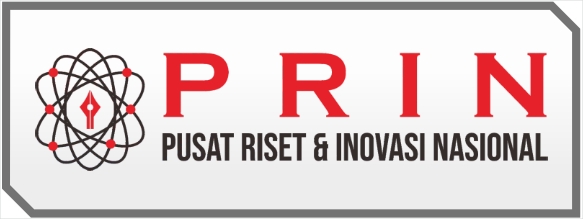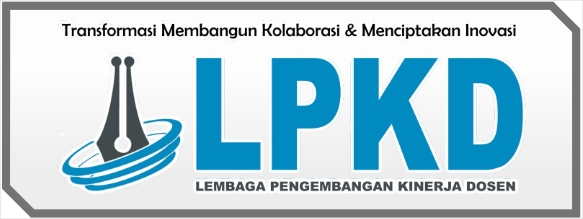ANALISIS KEMAMPUAN KOMUNIKASI MATEMATIS SISWA MELALUI MODEL PEMBELAJARAN KOOPERATIF TIPE TSTS
DOI:
https://doi.org/10.55606/jurrimipa.v2i1.748Keywords:
Two Stay Two Stray (TSTS), Students Mathematical Communication AbilityAbstract
This research aims to find out the results of research analysis of students abilities through the Two Stay Two Stray (TSTS) type cooperative learning model from various literature, as well as to analyze the difficulties of students mathematical communication skills through the Two Stay Two Stray model. This type of research is descriptive qualitative and uses a literature study research method which was carried out at the Digital Library, Medan State University in July – September 2022. The instrument in this study was the author himself. The steps of this research are: (1) Designing the research. (2) Carry out the research design. (3) Analyze and provide conclusions on the results of the analysis. The analysis technique used in the selection of information related to data analysis techniques is the Miles and Huberman analysis technique. The data source used secondary data consisting of 5 journals. The conclusions of the results of this study show that: (1) The average results of tests of students mathematical communication abilities through the application of the TSTS model are: (a) The indicator of mathematical representation is 51.93%, (b) The indicator of writing/explaining mathematics was 40.31%, (c) The indicators describe is 37.94%. (2) There are several difficulties experienced by students and teachers are: (a) Students have difficulty connecting real objects, pictures, and diagrams into mathematical models, (b) Students lack confidence in communicating arguments and ideas in mathematical problems, ( c) Students are less thorough in working on questions, (d) Students have difficulty expressing mathematical ideas in the form of graphs, pictures, or tables, (e) Low student skills in understanding mathematical communication problems and drawing conclusions about mathematical communication problems, (f ) The role of the teacher is less than optimal in carrying out learning activities.
References
Agusti, P.P. & Elniati, S. (2019). Pengaruh Model Pembelajaran Kooperatif Tipe Two Stay Two Stray (TSTS) Terhadap Kemampuan Komunikasi Matematis Peserta Didik Kelas XII IPA SMA N 7 Padang. Jurnal Edukasi dan Penelitian Matematika, 8(1) : 97-102
Ahmad, Jumal. (2018). Desain Penelitian Analisis Isi (Content Analysis). Sekolah Pascasarjana UIN Syarif Hidayatullah
Akhidah, I.S, Ettie, R. & Sari, F.S. (2019). Pemahaman Konsep dan Kemampuan Komunikasi Matematika Melalui Model Pembelajaran Kooperatif Tipe TSTS (Two Stay Two Stray). JP3, 14(6) : 54-63, ISSN 2337-6384
Alhadad, I., Yusumah, Y.S., Sabandar, J. & Dahlan, J.A. (2015). Enhancing Students’ Communication Skills Through Treffinger Teaching Model. IndoMS-JME, 6(1) : 31-39
Al-Tabany, Trianto Ibnu Badar. (2014). Mendesain Model Pembelajaran Inovatif, Progresif dan Kontekstual. Jakarta : Prenadamedia Group
Ansari, Bansul . (2018). Komunikasi Matematika Strategi Berfikir dan Manajemen Belajar Konsep dan Aplikasi. Banda Aceh : Pena
Aufa, M., Saragih, S. & Minarni, A. (2016). Development of Learning Devices through Problem Based Learning Model Based on the Context of Aceh Cultural to Improve Mathematical Communication Skills and Social Skills of SMPN 1 Muara Batu Students. Journal of Education and Practice, 7(24) : 232-248, ISSN 2222-1735
Aunurrahman. (2014). Belajar dan Pembelajaran. Bandung : Alfabeta
Fahradina, N., Ansari, B.I. & Saiman. (2014). Peningkatan Kemampuan Komunikasi Matematis dan Kemandirian Belajar Siswa SMP dengan Menggunakan Model Investigasi Kelompok. Jurnal Didaktik Matematika, 1(1) : 2355-4185, ISSN: 2355-4185
Hasratuddin. (2018). Mengapa Harus Belajar Matematika. Medan : Edira
Isjoni. (2014) : Cooperative learning Mengembangkan Kemampuan Belajar Berkelompok. Bandung : Alfabeta
Jamila, A., Coesamin, M., Wijaya, A.P., (2019). Efektivitas Model Pembelajaran Two Stay Two Stray Ditinjau Dari Komunikasi Matematis Siswa. Jurnal Pendidikan Matematika, 7(3) : 358-368, ISSN : 2338 – 1183
Jihad, A. & Haris, A. (2012). Evaluasi Pembelajaran. Yogyakarta : Multi Presindo
Kemendikbud. (2013). Matematika SMA/MA/SMK Kelas X Semester I Edisi Revisi 2017. Jakarta : Kementrian Pendidikan dan Kebudayaan
Lie, Anita. (2010). Cooperative Learning. Jakarta : Gramedia
Marwinda, T. D. N., Karso & Kusnandi. (2020). Penerapan Model Pembelajaran Kooperatif Tipe Two Stay Two Stray dengan Time Token untuk Meningkatkan Kemampuan Komunikasi Matematis Siswa. Journal on Mathematics Education Research, 1(1) : 15-19
Mayasari, Dian. (2015). Penerapan Model Pembelajaran Two Stay Two Stray Untuk Meningkatkan Komunikasi Matematis Dan Motivasi Siswa. Prosiding Seminar Nasional Matematika dan Pendidikan Matematika UMS. Hal : 102-111, ISBN : 978.602.361.002.0
Mudlofir, A. & Rusydiyah, E. F. (2017). Desain Pembelajaran Inovatif : Dari Teori ke Praktik. Jakarta : Rajawali Press
Panggabean, Nazla Nurul Aulia. (2018). Penerapan Model Pembelajaran Kooperatif Tipe Think Pair Share (TPS) untuk Meningkatkan Kemampuan Komunikasi Matematis Siswa Kelas VIII SMP Negeri 30 Medan T.A. 2018/2019. Medan : FMIPA UNIMED
Permata, C. P., Kartono & Sunarmi. (2015). Analisis Kemampuan Komunikasi Matematis Siswa Kelas VIII SMP pada Model Pembelajaran TSTS dengan Pendekatan Scientific. Unnes Journal of Mathematics Education, 4(2) : 217-224, ISSN 2252-6927
Perwitasi, D. & Surya , E. (2017). The Development of Learning Material Using Problem Based Learning to Improve Mathematical Communication Ability of Secondary School Students. International Journal of Sciences: Basic and Applied Research (IJSBAR), 33(3) : 200-207, ISSN 2307-4531
Rahmawati, Masi,L., Kadir & Jafar. (2018). Perbedaan Kemampuan Komunikasi Matematis Siswa yang Diajar dengan Model Pembelajaran Kooperatif Tipe TSTS dan yang Diajar dengan Model Pembelajaran Konvensional di Kelas VIII SMPN 4 Kendari. Jurnal Pendidikan Matematika, 9(2) : 205- 217
Rosa, Friska Octavia. (2015). Analisis Kemampuan Siswa Kelas X pada Ranah Kognitif, Afektif dan Psikomotorik. Jurnal Fisika dan Pendidikan Fisika. 1(2) : 24-28, ISSN : 2443-2911
Rusman. (2017). Model-Model Pembelajaran Mengembangkan Profesionalisme Guru. Jakarta : Raja Grafindo Persada
Shoimin, Aris. (2014). 68 Model Pembelajaran Inovatif dalam Kurikulum 2013. Yogyakarta : Ar-Ruzz Media
Siyoto, S. & Sodik, A. (2015). Dasar Metodologi Penelitian. Yogyakarta: Literasi Media Publishing.
Sugiyono. (2013). Metode Penelitian Kuantitatif, Kualitatif, dan Kombinasi (Mix Methods). Bandung: Alfabeta, CV.
Snyder, Hannah. (2019). Literature review as a research methodology: An overview and guidelines. Journal of Business Research, 104(2019): 333- 339.
Taniredja, T., Faridli, M. & Harmianto, S. (2017). Model-Model Pembelajaran Inovatif dan Efektif. Bandung : Alfabeta
Yuniartati, A. & Sumargiyani. (2018). Peningkatan Komunikasi Matematis dengan Menggunakan Model Pembelajaran Kooperatif Tipe TSTS Siswa Kelas VIII SMP. Seminar Nasional Edusainstek FMIPA UNIMUS. ISBN : 978-602-5614-35-4
Zed, M. (2014). Metode Penelitian Kepustakaan. Jakarta: Yayasan Obor Indonesia.
















